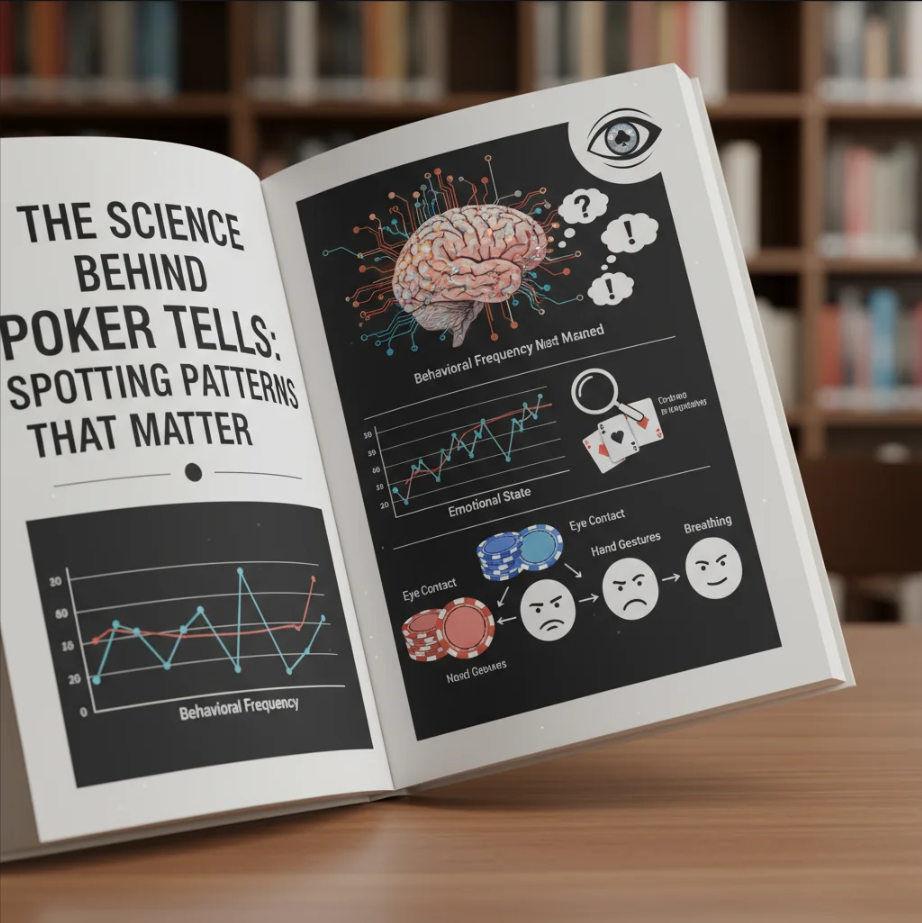Poker is a game of strategy, patience, and observation. While cards and chips tell part of the story, poker tells — subtle physical or behavioral cues — often reveal hidden intentions.
Understanding these tells isn’t about guessing randomly; it’s about spotting patterns and interpreting them through science. By combining psychology, behavioral science, and experience, players can gain an edge and make informed decisions without relying solely on luck.
🧠 The Psychology Behind Poker Tells
Human behavior often betrays hidden thoughts, especially under stress or excitement. At the poker table, micro-expressions, gestures, and timing can give away information:
- Facial micro-expressions: Quick, involuntary reactions can indicate emotions like nervousness or confidence.
- Body posture: Leaning in or away, fidgeting, or shifting weight can reflect comfort or uncertainty.
- Betting patterns: Timing, amount, and hesitation may signal strong hands or bluffs.
These cues are rooted in cognitive and emotional responses — understanding them requires observation and context.
👀 Common Poker Tells and What They Suggest
- The Nervous Shuffle: Fidgeting with chips often signals uncertainty or bluffing.
- Quick Glances at Chips or Cards: Frequent checks may indicate excitement about a strong hand.
- Inconsistent Speech Patterns: Hesitations or changes in tone can reveal stress or confidence.
- Posture Changes: Sudden upright sitting or leaning forward may indicate attentiveness or alertness to a potential win.
- Eye Movement: Looking away too quickly or avoiding eye contact may indicate discomfort.
It’s important to note: no single tell guarantees a hand’s strength. Patterns over time are what truly matter.
📊 Using Science to Spot Patterns
Professional players combine psychology with statistical observation to identify consistent tells:
- Track Behaviors Over Rounds: Patterns are more reliable than isolated actions.
- Consider Baseline Behavior: Every player has quirks; understanding their normal behavior is key.
- Integrate Data: Online players can also be studied through timing patterns and bet sizes.
- Stay Unpredictable: Avoid giving away your own tells; maintain consistent behavior to confuse opponents.
By using scientific observation, players turn subtle cues into actionable strategies.
🏆 The Ethics and Limitations of Poker Tells
While observing tells is part of strategic play, it’s not foolproof:
- Some players intentionally fake tells to mislead opponents.
- Stress and fatigue can create false patterns.
- Cultural differences can influence body language and gestures.
Success comes from combining tell recognition with solid hand-reading skills, odds calculation, and table awareness.
💬 Conclusion: Observation Meets Strategy
Poker tells are more than tricks — they are windows into human behavior. By observing carefully, understanding patterns, and applying psychology, players can make smarter decisions and gain a competitive edge.
Whether you’re a casual player or aiming for professional tournaments, mastering the science behind poker tells transforms the game from guessing to strategy-driven insight.


